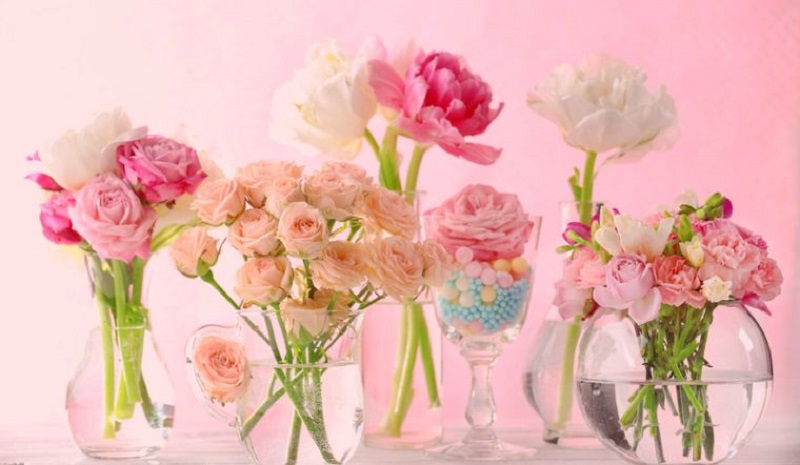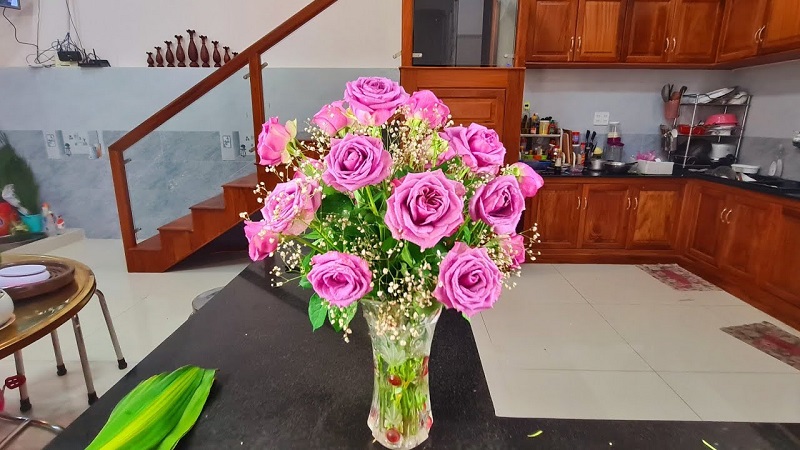Flowers have an incredible power to brighten up any space and bring a touch of nature indoors. A well-arranged bouquet can elevate a simple vase into a stunning centerpiece. Whether you’re preparing for a special occasion or simply looking to add a splash of beauty to your home, understanding how to arrange flowers effectively is key. This comprehensive guide will walk you through the essential steps and techniques for creating elegant and lasting flower arrangements in a vase.
Understanding the Basics of Flower Arrangement
Types of Flower Arrangements
Flower arrangements come in various styles, each with its own unique charm:
- Traditional: Characterized by symmetrical and formal designs, these arrangements often feature classic flowers and structures.
- Contemporary: Modern and innovative, contemporary arrangements may use unconventional materials and abstract forms.
- Ikebana: The Japanese art of flower arranging that emphasizes simplicity, balance, and the beauty of negative space.

Essential Tools and Supplies
To create a beautiful flower arrangement, you’ll need a few basic tools and supplies:
- Vase or Container: Choose a vase that complements your flowers and fits your arrangement style.
- Floral Foam or Kenzan (Flower Frog): Tools for securing and stabilizing the flowers.
- Pruning Shears or Scissors: Essential for cutting stems to the desired length.
- Floral Tape or Wire: Used for added stability and structure in the arrangement.
Preparing the Flowers and Vase
Selecting and Preparing Flowers
Choosing fresh flowers is crucial for a vibrant arrangement. Here’s how to prepare them:
- Choosing Fresh Flowers: Look for flowers with firm stems, vibrant colors, and no signs of wilting.
- Conditioning Flowers: Cut stems at an angle and place them in water immediately to hydrate before arranging.
- Removing Foliage: Strip leaves from the lower part of the stems to prevent water contamination and improve the arrangement’s appearance.
Preparing the Vase
The vase plays a significant role in the overall look of your arrangement:
- Choosing the Vase: Select a vase that suits the size and style of your flowers. Consider height, width, and material.
- Cleaning the Vase: Ensure the vase is thoroughly clean to prevent bacterial growth that can shorten the lifespan of your flowers.
- Adding Water: Fill the vase with fresh, clean water. Use flower food if available to nourish the flowers.
Techniques for Arranging Flowers
Basic Principles of Flower Arrangement
A well-arranged bouquet follows several key principles:
- Balance: Distribute flowers evenly around the vase to achieve visual equilibrium.
- Proportion: Ensure that the size of the flowers and the vase are in harmony.
- Focal Point: Create a focal point to draw the viewer’s attention and guide the arrangement’s composition.
Step-by-Step Arrangement Process
Follow these steps to arrange flowers effectively:
- Select a Design Style: Decide on a style—traditional, modern, or other—that suits your preference and the occasion.
- Prepare the Vase: Insert floral foam or kenzan if using, and add water.
- Start with Foliage: Arrange greenery or filler elements as a base to establish structure and volume.
- Add the Main Flowers: Place the largest or most prominent flowers first, positioning them to create a strong focal point.
- Incorporate Secondary Flowers: Add smaller or complementary flowers to fill in gaps and add depth.
- Adjust for Balance: Ensure that the arrangement looks balanced from all angles by making any necessary adjustments.
- Final Touches: Make final tweaks to enhance symmetry, height, and overall appearance.

Advanced Techniques
For more dynamic arrangements, consider these advanced techniques:
- Creating Depth: Layer flowers to add dimension and visual interest.
- Using Lines and Shapes: Incorporate vertical and horizontal lines to enhance the arrangement’s design.
- Experimenting with Color and Texture: Combine different colors and textures to create a vibrant and engaging display.
Caring for Your Flower Arrangement
To keep your flowers looking fresh and beautiful, follow these care tips:
- Watering: Regularly check and refresh the water to prevent stagnation and bacterial growth.
- Flower Food: Add flower food to the water to nourish the flowers and extend their lifespan.
- Trimming Stems: Recut stems every few days to ensure continued water absorption and freshness.
Handling and Placement
Proper placement and handling can also affect the longevity of your arrangement:
- Avoiding Direct Sunlight: Keep flowers away from direct sunlight to prevent wilting and fading.
- Temperature Considerations: Maintain a cool room temperature to prolong freshness.
- Preventing Ethylene Exposure: Keep flowers away from ripening fruits and vegetables, which can emit ethylene gas that accelerates wilting.
Troubleshooting Common Issues
Even with the best care, you might encounter some common issues:
- Dealing with Wilted Flowers: If flowers start to wilt, try recutting the stems and placing them in clean water with flower food.
- Addressing Design Flaws: If the arrangement appears unbalanced or uneven, make adjustments by repositioning or adding additional flowers.
Creative Ideas and Inspirations
Seasonal Arrangements
Seasonal flowers can add a touch of seasonal charm to your arrangements:
- Spring and Summer: Use bright, colorful blooms such as tulips, roses, and lilies.
- Fall and Winter: Opt for warm, cozy arrangements with seasonal foliage, such as mums, dahlias, and pine.
Special Occasions
Tailor your arrangements to fit specific occasions:
- Weddings: Create elegant and romantic bouquets and centerpieces with a focus on style and personal preference.
- Holidays: Design festive arrangements to celebrate various holidays, using colors and themes that reflect the season.
Resources and Further Learning
Recommended Reading
To deepen your knowledge and skills, consider these resources:
- Books: Look for comprehensive guides on flower arranging, such as “The Art of Floral Arranging” by David Austin.
- Online Resources: Explore websites and video tutorials for additional tips and inspiration.
Local Classes and Workshops
Enhance your skills with hands-on learning:
- Finding Classes: Search for local floral design classes and workshops to gain practical experience.
- Joining Floral Societies: Connect with local or national floral design groups to network and learn from others in the field.
Conclusion
Arranging flowers in a vase is both an art and a science, requiring attention to detail, creativity, and a bit of practice. By understanding the basic principles, using the right techniques, and caring for your flowers properly, you can create stunning arrangements that bring beauty and joy to any space. Embrace the process, experiment with different styles, and let your creativity flourish as you craft your own beautiful flower displays.
